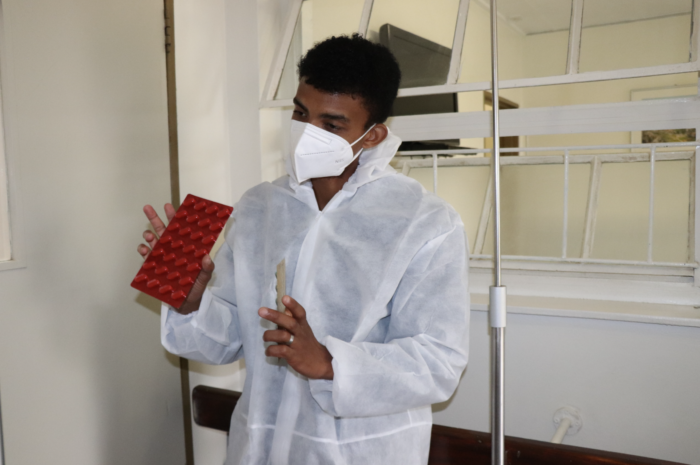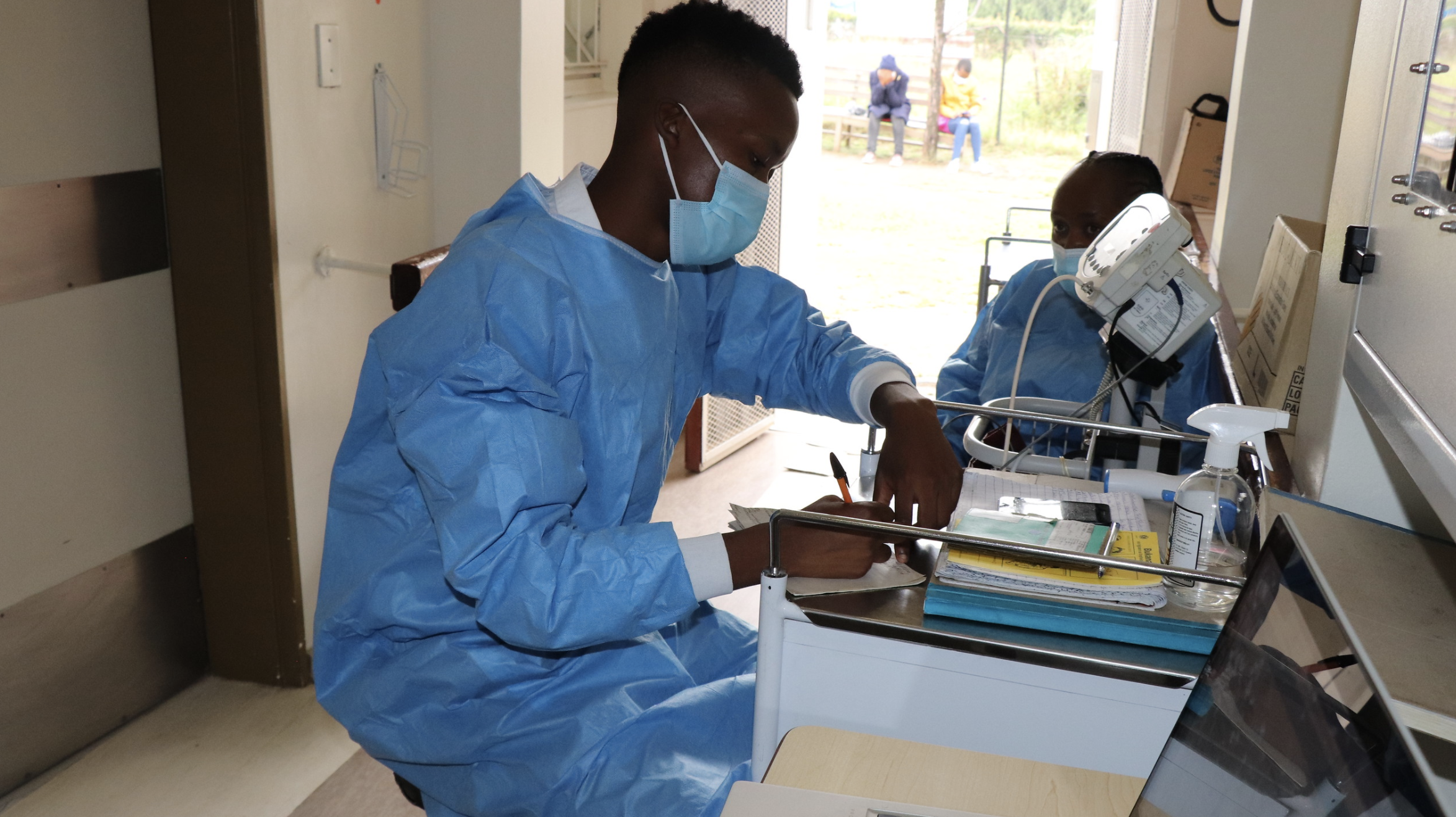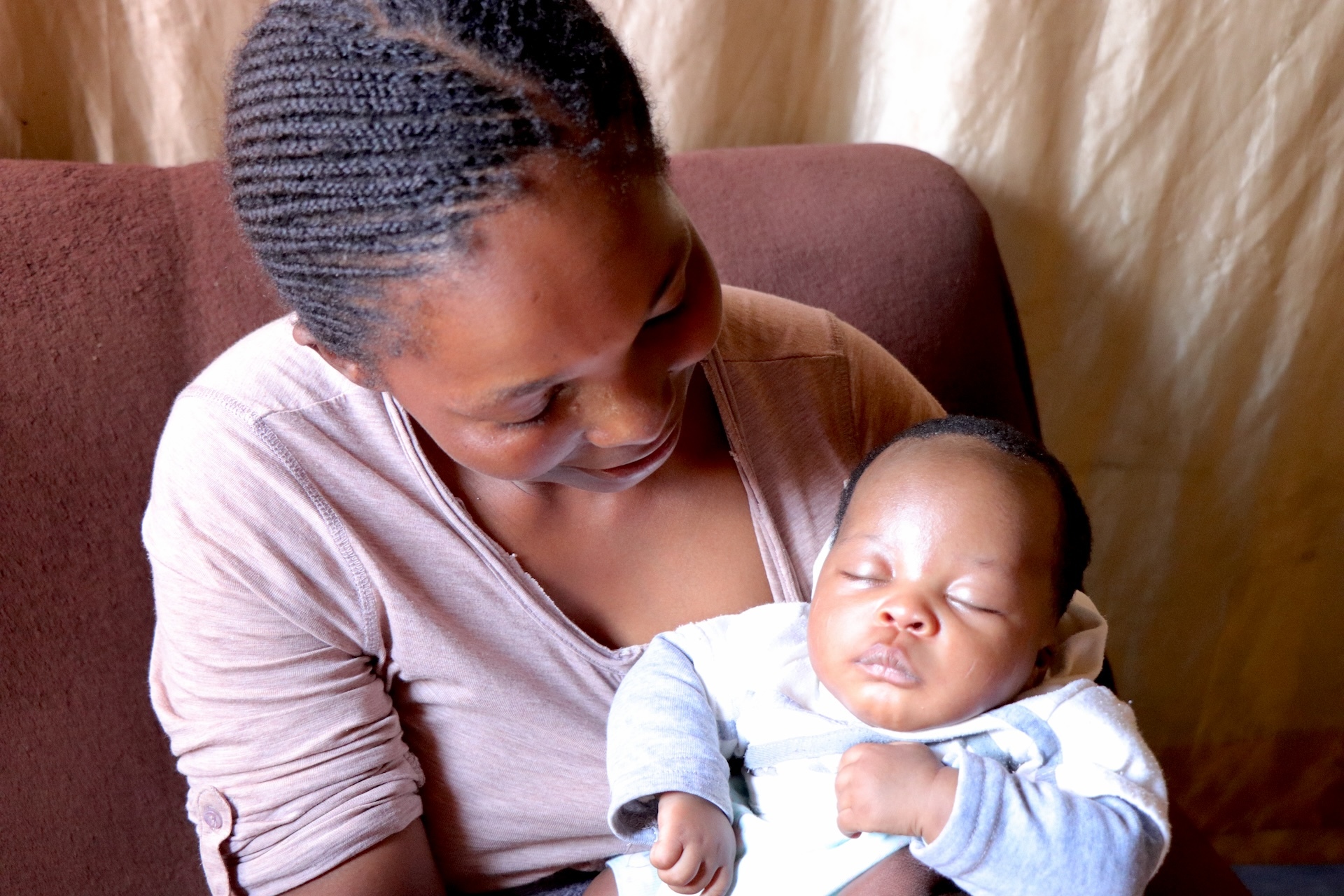Salley Salim, an assistant nurse at the Qoaling Tuberculosis (TB) Clinic in the outskirts of Maseru, Lesotho, provides health education to a TB patient, Matumelo Masea, who is there for a TB check-up and treatment refill.
Masea, a 40-year-old woman living with HIV and taking antiretroviral (ARV) treatment since 2018, works as a house helper in Durban, South Africa, as do many Basotho*. She only had three months of ARV treatment when she left Lesotho in March 2021. Being in South Africa, she was disconnected from her home clinic and was not able to journey back for healthcare.
Towards the end of the year, after six months without ARVs, she started complaining of symptoms suggestive of TB, such as feeling weak and tired, with loss of weight. Without her ARVs, her immune system had weakened, becoming more susceptible to opportunistic infections. She developed a cough and was unaware that she had contracted TB.
TB is an airborne disease that is the world’s top infectious killer. Although TB is preventable and curable, it remains the second leading cause of death in Lesotho. Treatment coverage across the country is low and has dropped from 51% in 2019 to 33% in 2021, according to World Health Organization (WHO) Global report. This means only one-third of people receive treatment while the other two-thirds are not even diagnosed. Approximately 59% of TB patients in Lesotho are co-infected with HIV (Global WHO 2021 report).
“One of the reasons TB remains so deadly, despite having effective treatments and a cure, is that most TB patients report very late to the facility when they are already very sick,” explains Nurse Salim “Some think it is just flu or cough until when symptoms worsen and present to facilities when they have lost weight, frail and bedridden. Many face other major obstacles in seeking medical care, such as poverty, which can manifest as malnutrition and difficulty in finding the means to travel and seek care.”

The COVID-19 pandemic has exacerbated barriers to care. Many people have been hesitant to attend medical facilities for fear of high COVID transmission at clinics. Additionally, travel restrictions between South Africa and Lesotho have made it increasingly difficult for Basotho to return home for medical care, as was the case for Masea.
Masea was finally able to return home in December 2021 and immediately reconnected with her home facility, the Qoaling Clinic to check in and refill her ARVs treatment. Because she exhibited flu-like symptoms, Masea was administered both a COVID-19 and a TB test, coming back positive for TB.
By the time Masea was re-connected to care, she had already lost considerable weight and energy. Despite this obstacle, Nurse Salim made sure to initiate an effective anti-TB treatment and provide Masea with all the education and guidance she needed to make informed choices in adherence to treatment.
During the outbreak of the COVID-19 pandemic, most facilities were focusing more on COVID-19 and very little or none on identifying TB cases as capacity was stretched thin, further reducing TB case identification and treatment. However, the Qoaling Clinic decided to expand TB screening by integrating COVID-19 and TB testing.
“Now, when a patient exhibits cold and flu-like symptoms, they are directed to the TB clinic to take both COVID-19 and TB tests,” says Nurse Salim. “If one does not have COVID-19 they are checked if they have TB. If the TB test is negative but they are still demonstrating TB symptoms, the patient is further taken for a chest x-ray to rule out TB.”
In January 2022, out of 153 cases of individuals exhibiting possible TB symptoms, 13% were confirmed as TB-positive.
Nurse Salim attributes the success of the initiative to a team effort: “Screeners conduct symptom surveys to outpatients to identify presumptive cases and direct them to the TB clinic for further assessment and testing,” she says. “Nurses administer treatment and provide health education. And contact tracers follow up with confirmed TB patients at home to screen other members of their households for TB transmission.
“Every Friday, we check the appointment book to find the patients who missed their appointments and call them to come for their treatment refill or check-ups,” Nurse Salim says.
Today, several months after her diagnosis, Masea is feeling much better. She has re-initiated adherence to her ARVs and is on a closely monitored TB recovery plan. After this close call with TB, she vows to adhere to her TB treatment and to lifelong ARVs. Nurse Salim is optimistic that new innovations, such as the integration of COVID-19 and TB testing, will continue to improve the clinic’s efforts to effectively identify, test, and treat TB in their community.
———————————–
During the UN General Assembly (UNGA) High-Level Meeting on Tuberculosis in 2018, global leaders highlighted the need to direct all efforts towards finding missing TB cases in populations such as miners, ex-miners, health workers, children, and people living with HIV.
The global theme for World TB Day in 2022 is “Invest to End TB. Save Lives.” This theme comes as a response to the low levels of funding for TB globally year after year. With effective commitment and investment in TB identification, testing, and treatment programs, governments and healthcare implementers like Nurse Salim can continue to work hand-in-hand with Basotho to eradicate TB.
* Basotho refers to the people of Lesotho.




